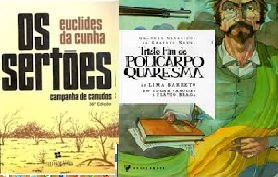
Initial brazilian Republic
In 1987 Euclides da Cunha, celebrated for his novel “Sertões”, was sent to “damn camp” in the Bahian town of Canudos by the then Republican newspaper O Estado de São Paulo.
“damn camp” in the Bahian town of Canudos by the then Republican newspaper O Estado de São Paulo.
There he saw in the revolt led by anacoreta Antonio Conselheiro, was not the contrast “technical progress against religious primitivism” (Cunha, 2015, p. 81), but that “at crucial times in which we are obliged to accept or not learn to deal eatIn 1987 Euclides da Cunha, celebrated for his novel “Sertões”, was sent to “damn camp” in the Bahian town of Canudos by the then Republican newspaper O Estado de São Paulo.
There he saw in the revolt led by anacoreta Antonio Advisor, was not the contrast “technical progress against religious primitivism” (Cunha, 2015, p. 81), but that “at crucial times in which we are obliged to accept or not learn to deal eat indifference. “(ibid).
Cunha cites according to Rodrigo Gurgel analysis in “Forsaken and Understated” that the soldier who turns up dead in Euclides da Cunha’s novel may have been fictional, placed apena to say that there were other factors in Canudos Campaign.
Cunha also analyzes that another author is interested in the real nature, Lima Barreto, that the opening of the fifth chapter of sad end of Policarpo Quaresma (1916), Cunha makes a long described, but here only quote the end, “every crazy brings in you your world and for him there is more like: what was before the craziness is another much other than it comes to being after “(cited in Cunha, 2015, p 85).
The number of crazy growing up in Rio de Janeiro in the early century, says Cunha: “Rio was a social”inferno and this climate of terror was transmitted to the writer, who could not keep up with the fury of the progress that seemed to drag everyone without asking permission “(Cunha, 2015, p. 87).
Is not as important to know that Lima Barreto was one of his victims, and although it is possible a parallel with Euclides da Cunha, but that among the forgotten Straws, of hospices and ‘The cemetery of the living’ (Barreto of life in hospice ) are Indians, blacks, mulattoes, and many others that we now turn.. “(ibid).
Cunha cites according to Rodrigo Gurgel analysis in “Forsaken and Understated” that the soldier who turns up dead in Euclides da Cunha’s novel may have been fictional, placed apena to say that there were other factors in Canudos Campaign.
Cunha also analyzes that another author is interested in the real nature, Lima Barreto, that the opening of the fifth chapter of sad end of Policarpo Quaresma (1916), Cunha makes a long described, but here only quote the end, “every crazy brings in you your world and for him there is more like: what was before the craziness is another much other than it comes to being after “(cited in Cunha, 2015, p 85).
The number of crazy growing up in Rio de Janeiro in the early century, says Cunha: “Rio was a social”inferno and this climate of terror was transmitted to the writer, who could not keep up with the fury of the progress that seemed to drag everyone without asking permission “(Cunha, 2015, p. 87).
Is not as important to know that Lima Barreto was one of his victims, and although it is possible a parallel with Euclides da Cunha, but that among the forgotten Straws, of hospices and ‘The cemetery of the living’ (Barreto of life in hospice ) are Indians, blacks, mulattoes, and many others that we now turn.









